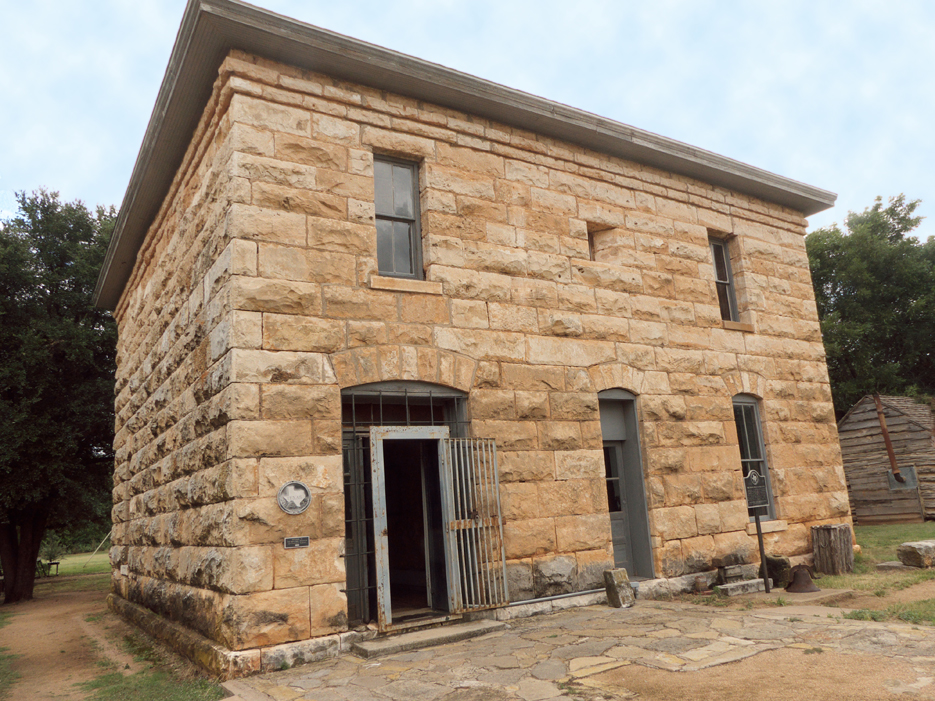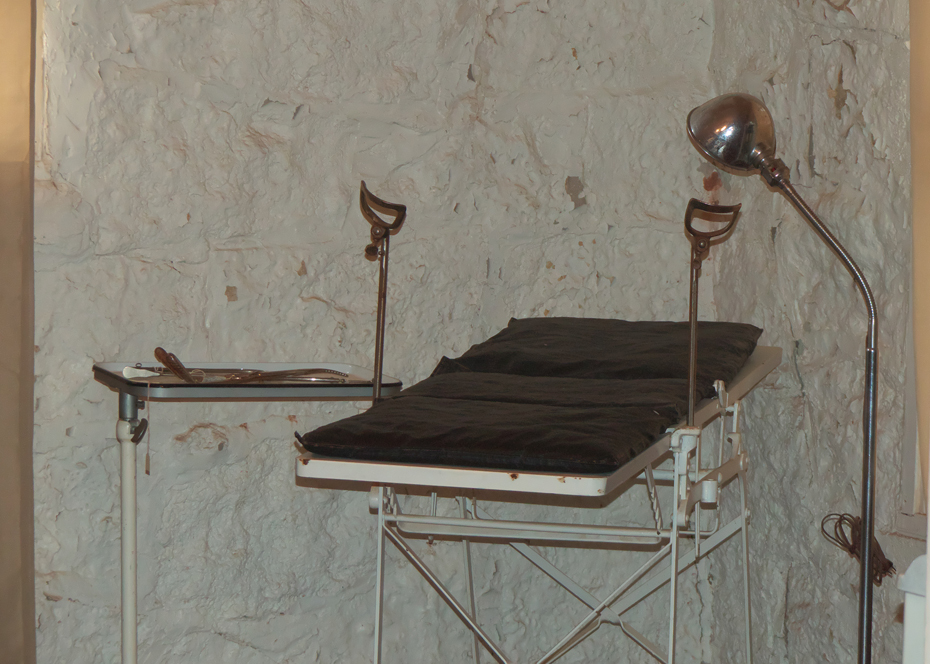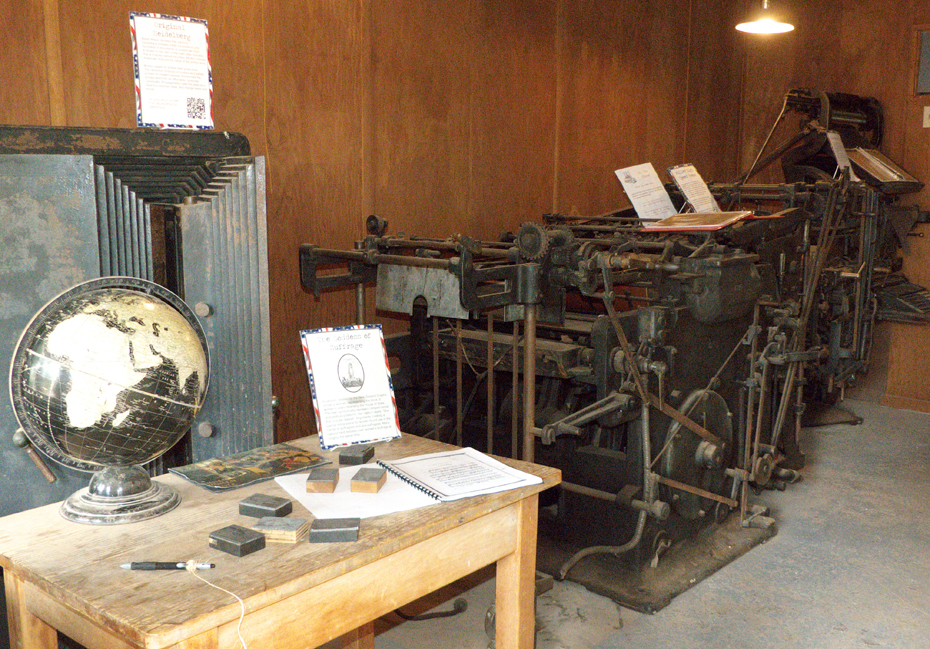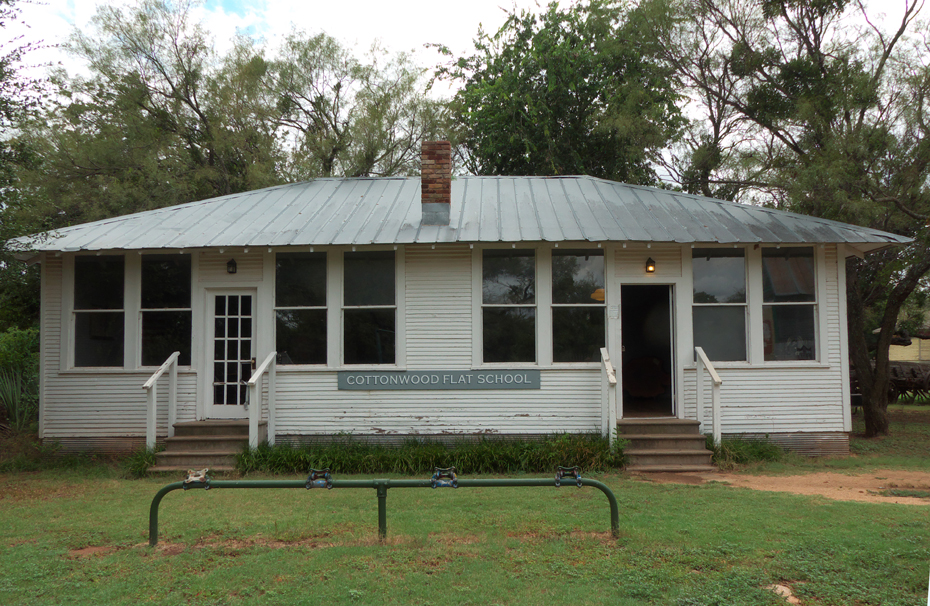
Buffalo Gap, Texas is a glimpse of the Wild
West as it really was. Buffalo Gap was founded at the site of a
natural pass through which bison herds traveled. It was a stop
for cowboys on the Great Western Cattle Trail. In the late 1800s it was
the spot where buffalo hunters camped. By 1880, it had been
named county seat and had a population of 200. It had the usual
businesses, hotel, blacksmith shop, a general store and a
saloon. Perhaps the most important building in Buffalo Gap was
the Taylor County Jail and Courthouse.
 |
| Buffalo Gap Village's 1883
Courthouse and Jail |
Today, the unincorporated town has a
population under 500 and the general store has metamorphosed
into more of an arts and craft shop joined by several other
shops. The restaurant draw there is
Perini Ranch Steakhouse
(That's another article) but the main attraction centers around
the Old County Jail and Courthouse.
This was the courthouse and jail that was
built shortly before the county seat was moved to Abilene. The
story of how the county seat was moved reflects on the
unchanging nature of politics. Kenna Hogan, village intern, our
guide told us, "Around the 1870s Buffalo Gap decided they needed
some type of law because men were running around wild here." She
noted the saloon across the street. "They decided to build a
courthouse since they were the county seat."
 |
| Inside of Buffalo Gap Village's
1883 Courthouse and Jail |
Meantime, the railroad was acquiring land
for their new line. Kenna explained, "The local landowners
feeling that Buffalo Gap was the county seat decided to increase
their asking price and the railroad refused to pay it and bought
around Abilene instead. People began leaving Buffalo Gap and
moving there. In 1883 there was an election whether to move the
county seat. The election was a tie and the breaking vote fell
to Taylor County Judge John Watts Murray, who was the sitting
judge in Buffalo Gap. The story goes the railroad paid him to
vote for Abilene and the county seat moved to Abilene."
The Buffalo Gap citizens were furious and a
group of well-armed and well-lubricated men rode out to the
Judge's farm. Meantime, Judge Murray knowing the disposition of
the locals immediately left town. When the posse arrived at the
Judge's home all they found left were his chickens. They vented
their anger on the hapless birds and slaughtered all of them and
held an impromptu barbeque on the judge's lawn. That
tradition lives on today in Perini Ranch steakhouse
"Judge's Fried Chicken."
 |
| Original desk at Buffalo
Gap Village's 1883 Courthouse and Jail |
The courthouse is filled with historical
artifacts. They range from moonshine jugs to the original
judge's desk. Lots of good signage explaining events related to
Buffalo Gap like the poster explaining the fall of the Comanche
Empire which allowed white settlers to settle the area.
The Hill House was moved from in front of
St Paul United Methodist Church in Abilene. House was built in
early 1880s. John Thomas Hill was first marshal in Abilene and
arrested for counterfeiting. Sent to Ballinger to be a deputy
where he later shot off his big toe accidentally and died of
gangrene in this house.
 |
| Hill House at Buffalo Gap
Village |
His wife, Molly, and daughter Belle
continued to live in the house and Belle died in house in the
1960s and is believed to haunt the house. Paranormals Societies
have investigated and recorded voices of a man and a woman.
Kenna told us "There is a lot of activity that can't be
explained."
 |
| Living area in Hill House at
Buffalo Gap Village |
Hill had second family in Utah. Kenna
discovered that through "Find a Grave." It is still unknown
whether Hill had married the woman in Utah but there was a
daughter. Also not know if the wife in Abilene knew of the
family in Utah.
The oldest house in the Village is the
Knight/Sayles Cabin. It was built by J.M. Knight, a former
buffalo hunter, in 1875. He had his wife raised six of their
thirteen children in this tiny one room cabin. The children
slept in the loft. The native cedar wood cabin was originally
located near Abilene Lake six miles to the west. The design is
what is known as a "single pen cabin".
 |
| Knight/Sayles House at Buffalo
Gap Village |
| |
The railroad was the prime factor of change
not only in the West but across the country. You find a strip of
railroad tracks and ticket office.
 |
| Section of railroad and depot
at Buffalo Gap Village |
There is so much to see here. From a turn
of the century doctor's office with instruments that are
guarantee make you determined to stay healthy just to avoid a
visit to a doctor to the barber shop. Other early 1900s
buildings include the chapel, old school house, and the
traditional blacksmith's shop.
 |
| Doctor's examining table at
Buffalo Gap Village |
Even after cars made their debut at this
time, many people though it was just a passing fad.This
blacksmith's shop is a recreation. Its front doors were taken
from a actual blacksmith's shop that specialized in making
branding irons. When one was finished, the blacksmith would test
it on the front doors.
 |
| Blacksmith's Shop at Buffalo Gap
Village |
Banks were a staple from the earliest days.
After all what else would those bandits in all the old western
movies rob? The bank in Buffalo Gap Village is preserved in time
at the beginning of the depression era as banks around the
country closed.
As the automobile proved itself more than a
passing fad, gas stations opened all over. The Magnolia Gas
Station we viewed here was moved from Winters, Texas and
originally had only one pump. The pumps were called visible
pumps because when the attendant would pump your gas you could
see the visible tank fill up and then releasing it into your
vehicle.
 |
| Old gas station at Buffalo Gap
Village |
Before the days of TV news and computer
push apps, newspapers thrived and were fiercely competitive. Even small
towns often had more than one paper.
Some even resorted to printing false
stories and scandals to get an edge over the competitor. Some
things never change. A visit to the Print Shop here in
Buffalo Gap Village brings to mind life in the early 20th
century.
 |
| Printing press at Buffalo
Gap Village |
All together there are fifteen outdoor
structures and hundreds of artifacts that tell not only Buffalo
Gap's story but that of frontier Texas from the late 19th
century into the early 20th century as the state moved from
frontier to the early industrial age.
 |
| Old schoolhouse at Buffalo
Gap Village |
Buffalo Gap Village began through the
efforts of Ernie Wilson, a Texas lawyer. rancher, and historian
who did not want to see these historic treasures lost. He
purchased the courthouse and began a small museum of Indian and
Western artifacts. Later he added two other Taylor County
structures, the Hill House and the Knight/Sayles Cabin. When he
died in 1970, Dr. R. Lee Rode, M.D. and his wife, Ann, purchased
the buildings. They expanded the site with additional historic
structures. After his retirement, he offered the village for
sale. It was purchased in its entirety by the Grady McWhiney
Research Foundation which operates the non-profit educational
facility you can visit today.
It's a wonderful laid back way to learn and
enjoy history. Throughout October, the village offers Ghost
Tours. It's not only "dog friendly" but has several of its own
resident cats.
 |
| Kenna shows off village cats at
Buffalo Gap Village |
Buffalo Gap may be a tiny town but it is a
perfect example of how "good things come in small packages."
For more info:>
http://tfhcc.com/tour-the-village/
|